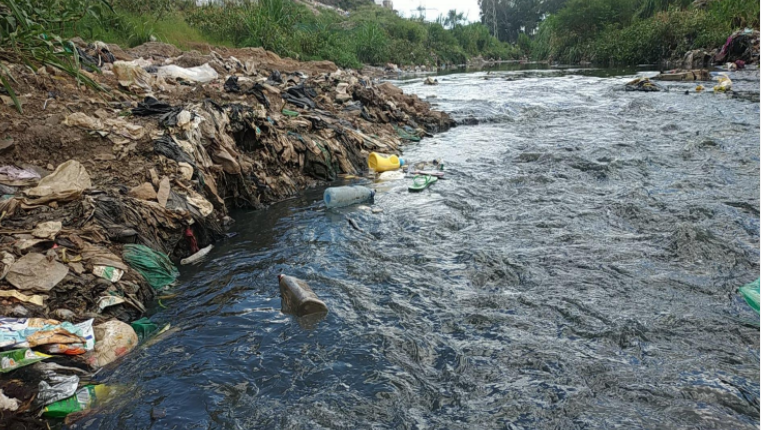Nema names key polluters of Athi River

Effluent discharged into River Athi from industries, slaughterhouses, dumpsites and municipal sewers have been identified as the leading pollutants of the river, a report by the National Environmental Management Authority (Nema) has revealed.
The report before the Public Petitions of the National Assembly, exonerates a majority of industries in the Athi River area which had been accused of polluting the river by discharging effluent.
According to the report, many of the industries audited have complied in treating materials they discharge. Waste from the informal settlement into the river and effluent and solid wastes, poor agricultural and livestock practices, residual pesticides, silt, organic and inorganic fertilise, quarrying and sand harvesting activities have also contributed largely to the pollution.
When he appeared before the committee last week, Interior Cabinet Secretary Kithure Kindiki appeared to blame the industries for polluting the river. He also revealed that a multi-agency team will be meeting soon to identify polluters.
“A crackdown on all the polluters will be done and those found culpable made to compensate those affected by the waters,” he told MPs.
The report which was compiled by a team led by NEMA Director General Mamo Mamo, identifies Kibera, Mukuru slums, Tassia, Pipeline, Eastleigh Section 3, Kiambiu slum, Githurai 44/45, Dandora dumpsite, Korogocho, Kahawa Wendani, Mlolongo town, Athi River town, Machakos town, Wote town, Kibwezi, Mtito Andei Townships. Voi town, Mwatate & Mbololo.
Horticultural & coffee plantations in Thika, Ruiru and Matungulu, Kibwezi, Mua, Iveti, Kangundo & Matungulu hills, Coffee factories in Kiambu, Thika, Ruiru, Matungulu and Kangundo, Horticultural farming in Taita hills, Ranches in Taita, Galana ranch as the major pollutants.
Others are Juja quarries, Ruiru dumpsites, Yatta & Mwala, Kaiti, Muooni, Kikuu, Kambu Rivers sand harvesting sites, Syanthi-Kathaana quarries, Voi sand quarrying,
Bursting and blockages of sewers at St. George’s primary school sewer line, Muthurwa sewer line, Donholm-Tassia bridge sewer line, Murang’a Road (Globe cinema) sewer line, Umoja-Dandora sewer line, Inside Kenya Science campus sewer line, inside Museum’s compound (Kipande road), In Lang’ata off southern bypass, Kiambu sewerage system, Maruba area sewer line(Machakos), EPZ sewer line (Athi River).
Non-functional effluent waste facilities include Ruai treatment works, Industries in Nairobi, Machakos treatment works, EPZ treatment works in Athi River, pumping stations (Bridge 39) and Alfarama pumping station, Machakos Grogan pump station, Voi sewerage stabilization ponds.
The Dandora dumpsite, pit latrines in informal settlements, Machakos dumpsite, Wote dumpsite, Kiambu dumpsite discharge untreated sewerage into the river.
Counties where the river transcends, namely Nairobi, Kiambu, Machakos and Taita Taveta have also been called out for failing to control waste discharge.
He said that studies by the Government Chemist and private scientific research have shown that River Athi is infused with heavy metals, industrial, biomedical and human wastes. “We are staring at environmental pollution of monumental proportions. The heavy metals may have been transmitted to our food chain,” warned Kindiki.
The petition has been filed by Mwala MP Vincent Musyoka on behalf of the residents.
Kindiki told the committee River Athi waters contain hazardous wastes such as radioactive, explosive and e-waste, biomedical waste, hazardous wastes and municipal waste discharged by industries along its path, especially from Nairobi and Machakos counties.
“We are staring at environmental pollution of monumental proportions. The heavy metals may have been transmitted to our food chain,” warned Kindiki.
He said some of the chemical emissions from the establishments find their way into the food chain disrupting the natural biotic cycle, which poses as a major threat to the locals and others who use the water.
Wastes according to the CS, originates from drug manufacturing industries, cosmetics, plastics, synthetic fibre, paints, and cleansing agents, among others.
“Natural waters from rivers and lakes are becoming unfit for domestic use and some streams become biologically barren,” said Kindiki. Kindiki said pharmaceutical industries are dumping into River Athi antibiotic residues while ternaries are releasing calcium, chromium, dissolved and suspended matter.
The pollution of the River Athi-Sabaki, states the report, has reached levels that require a more targeted multi-sectoral intervention to prevent further pollution.
“Pollution of this River and its tributaries has raised both scientific and environmental concerns among the regulatory authorities and research institutions,” reads the report.
The river is of socioeconomic significance used for domestic water, fisheries, wildlife and agricultural purposes among others. If the pollution is left unchecked then more lives will be at risk.
Kindiki told MPs millions of people who use water from the River Athi were living in danger of contracting harmful ailments after studies by government and private experts found that the waters contain heavy metals and carcinogenic substances.












